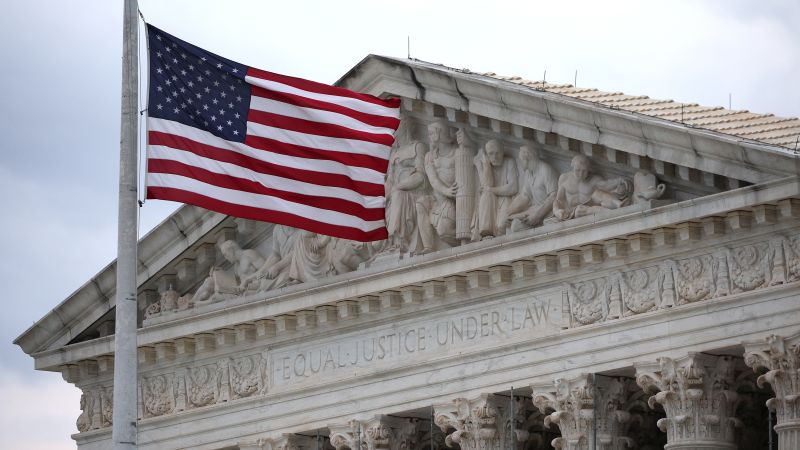The Supreme Court, during a recent session on a Tuesday, chose not to entertain the appeal lodged by Liam Morrison, a middle school student from Massachusetts, involving a T-shirt that read, “there are only two genders.” This decision highlights the ongoing debates over students’ rights to express personal views, especially on controversial subjects. The appellate ruling remains crucial as it reinforces school authority over individual expression in educational settings, a topic that has been ascending the ladder of public discourse, particularly regarding gender and sexuality.
In this decisive moment, two conservative justices, Samuel Alito and Clarence Thomas, vocally opposed the Court’s decision to reject the case. Alito articulated his concerns about the broader implications of the ruling, suggesting that if the current decision of the lower courts stays in effect, it poses a significant risk to the First Amendment rights of numerous students. He emphasized that “thousands of students will attend school without the full panoply of First Amendment rights,” which he strongly believed warranted the Supreme Court’s intervention.
Liam Morrison initially wore the contested T-shirt to Nichols Middle School located in Middleborough, Massachusetts, in 2023, expressing his belief that gender and sex are synonymous. However, after school officials requested he take off the shirt and he refused, he was sent home for the day as an escalation of the school’s enforcement of its dress code. In an attempt to maintain his statement, he later returned to school wearing the same shirt, cleverly masking the phrase “only two” with tape marked “censored,” signifying his insistence on expressing his viewpoint while navigating the restrictions imposed by school authorities.
This incident emerged amid a time when transgender rights had become a particularly heated issue within both political arenas and social circles across the United States. The Supreme Court was also grappling with multiple cases closely tied to LGBTQ+ rights, notably including a significant legal battle against Tennessee’s ban on gender-affirming healthcare for minors. These concurrent issues exhibit the volatility and urgency surrounding discussions of identity politics and the rights of marginalized groups in America.
David Cortman, a senior counsel from Alliance Defending Freedom—a law organization advocating for Morrison’s case—voiced his disappointment regarding the Supreme Court ruling. He considered it a setback in the fight against censorship within educational frameworks. Cortman contended that public schools should not be in the business of suppressing students’ views, especially when the institution itself promotes its own perspectives on gender through various channels, including posters and Pride events. He underscored that silencing a speaker solely based on disapproval of their message contradicts the core values embedded within the United States’ legal framework.
Morrison and his family took legal action against the school district, claiming his First Amendment rights had been violated. Initially, a district court ruled against him, and the 1st US Circuit Court of Appeals from Boston upheld this decision. Justice Alito, dissenting in the case, urged for a reassertion of the critical principle forbidding viewpoint discrimination in schools, warning that the outcome of this litigation could deprive many students of essential First Amendment protections.
Historically, the landmark ruling in the 1969 case of *Tinker v. Des Moines* serves as a significant precedent, asserting that students do possess First Amendment rights within educational settings. However, that ruling allowed for regulation of student speech if it was perceived to “materially disrupt” classroom instruction. The case involved students wearing black armbands to protest the Vietnam War, thus raising questions of expression versus institutional authority in schools.
In Morrison’s case, the appeals court determined that schools have the right to limit student speech if it potentially demeans other students’ identities, claiming that such messages could harm the educational atmosphere. Morrison rebutted this decision, arguing that it effectively undermined the principles established in *Tinker*, allowing schools undue latitude in assessing what constitutes “demeaning” speech.
In their response, school officials highlighted the seriousness of challenges faced by transgender and gender-nonconforming students, mentioning mental health issues and suicidal ideation linked to their treatment by peers. This recognition of mental health struggles illustrates the complexity surrounding discussions of free speech and the need for sensitivity toward the experiences of all students within educational environments.
As this case illustrates, the intersection of First Amendment rights and school policies continues to be a contentious battleground, with the potential to shape the future of student expression and institutional governance.



